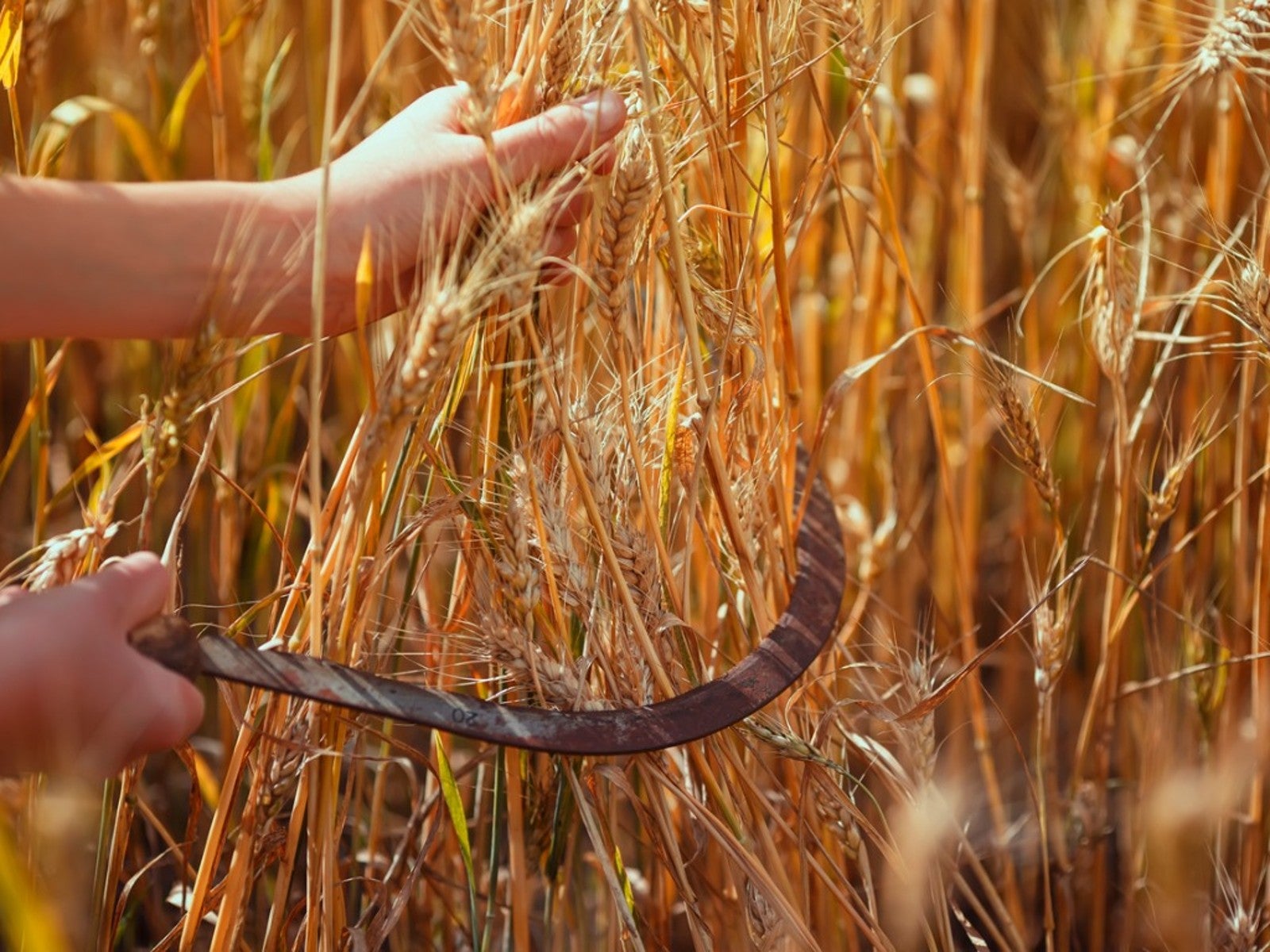Harvesting Wheat In The Home Garden


For gardeners who want to know where their food comes from, growing and harvesting wheat by hand is an earth-friendly solution. Wheat can be used in a variety of products, including bread, rolls, cookies and pastries. But can you harvest enough wheat to make your own homemade baked goods?
Wheat Harvesting at Home
Harvesting wheat from your home garden can seem like a daunting task. After all, farmers use a large piece of equipment called a combine to bring this crop in from the fields. But for 10,000 years, humans have harvested wheat using a sickle to cut the plants and a flail to thresh the grain.
Don't worry if you don't have access to these ancient tools. A sharp pair of scissors, large kitchen knife or hedge shears can be used to cut wheat. You can make a homemade flail or simply bang bundles of wheat against the inside of a clean trash can to release the seeds.
Determining Wheat Harvest Time
In part, the time to harvest wheat will depend upon which type you grow:
- Winter wheat is planted in the fall and goes dormant as it overwinters in the field. When spring arrives, it grows rapidly and is ready for harvest in July.
- Spring wheat is planted in April or May and grows throughout the spring and early summer. It's harvested in August or September.
Aside from that, determining the ideal time to harvest wheat hinges on recognizing these four stages of seed development:
- Milk stage: The kernels are forming and contain a milk-like liquid. They are soft and can easily be squished.
- Soft dough stage: The kernel can be still be squished, but no longer releases milky liquid.
- Hard dough stage: The kernel is firm and requires pressure to dent it with your fingernail.
- Flint stage: The kernel is hard and brittle.
Most commercial growers harvest wheat at the flint stage, but as a home gardener you have another option. If you harvest wheat at the hard dough stage and cure it, the bran will be much finer when ground. This produces a more digestible and higher quality whole wheat bread.
How to Harvest Wheat
Small amounts of wheat can be harvested by cutting off the seedheads. These can be laid to dry in the house or garage. For larger crops, home gardeners can use a sickle or other cutting tool to remove the wheat plant just above ground level.
Sign up for the Gardening Know How newsletter today and receive a free copy of our e-book "How to Grow Delicious Tomatoes".
The stems are bundled together with the wheat heads facing the same direction, then tied with string or a flexible wheat stem. To cure the wheat, lean the bundles against each other in the field with the wheat heads facing up.
It's advisable to hand-harvest wheat during dry weather as rain will damage the crop. Warm, dry weather will also cure the wheat quicker, which gives mice and birds less opportunity to take a share of your harvest.
Once the wheat reaches the flint stage, it's cured sufficiently for threshing. If you don't have a flail, simply beat the bundles of wheat on the inside of a trash can to release the seeds.
To separate the chaff from the seeds, pour the grain from one bucket to another in front of a fan. The wheat is now ready to make into flour using a grain mill, blender, food processor or coffee grinder.

Laura Miller has been gardening all her life. Holding a degree in Biology, Nutrition, and Agriculture, Laura's area of expertise is vegetables, herbs, and all things edible. She lives in Ohio.